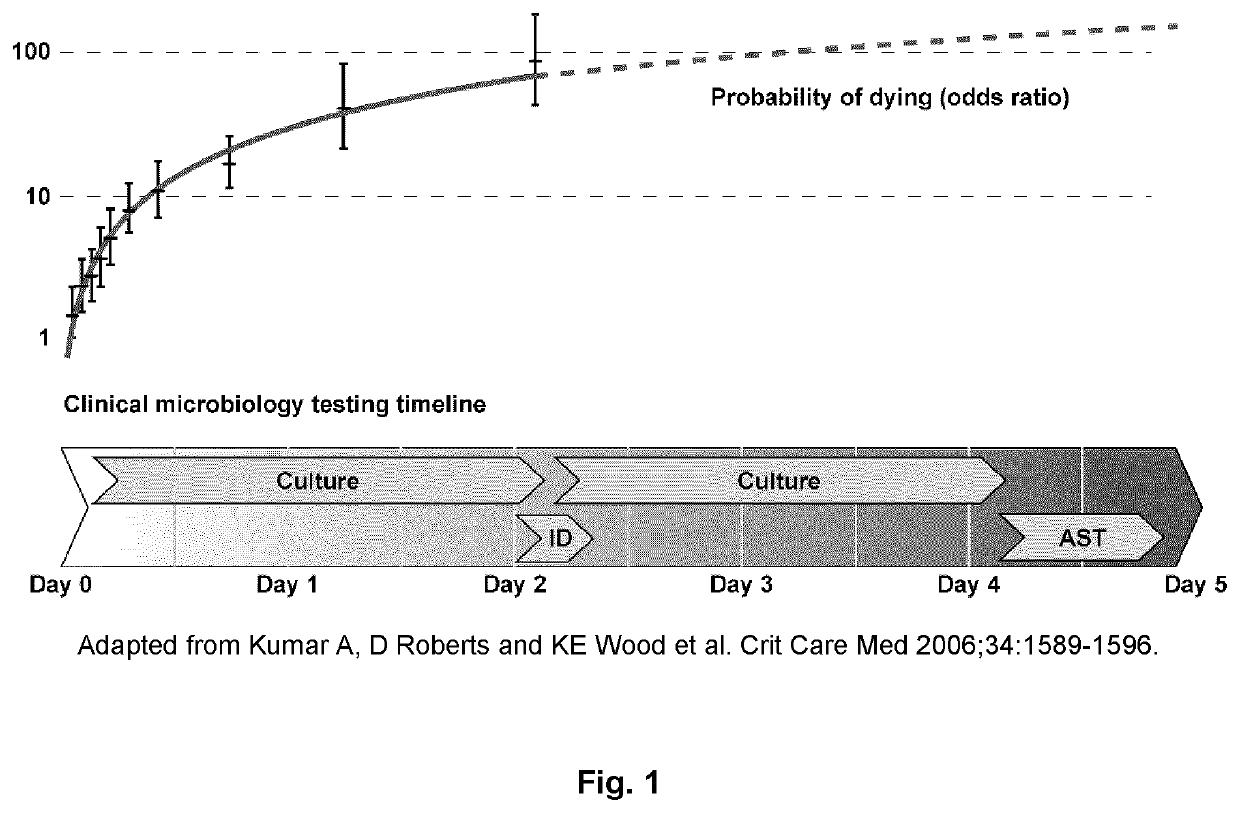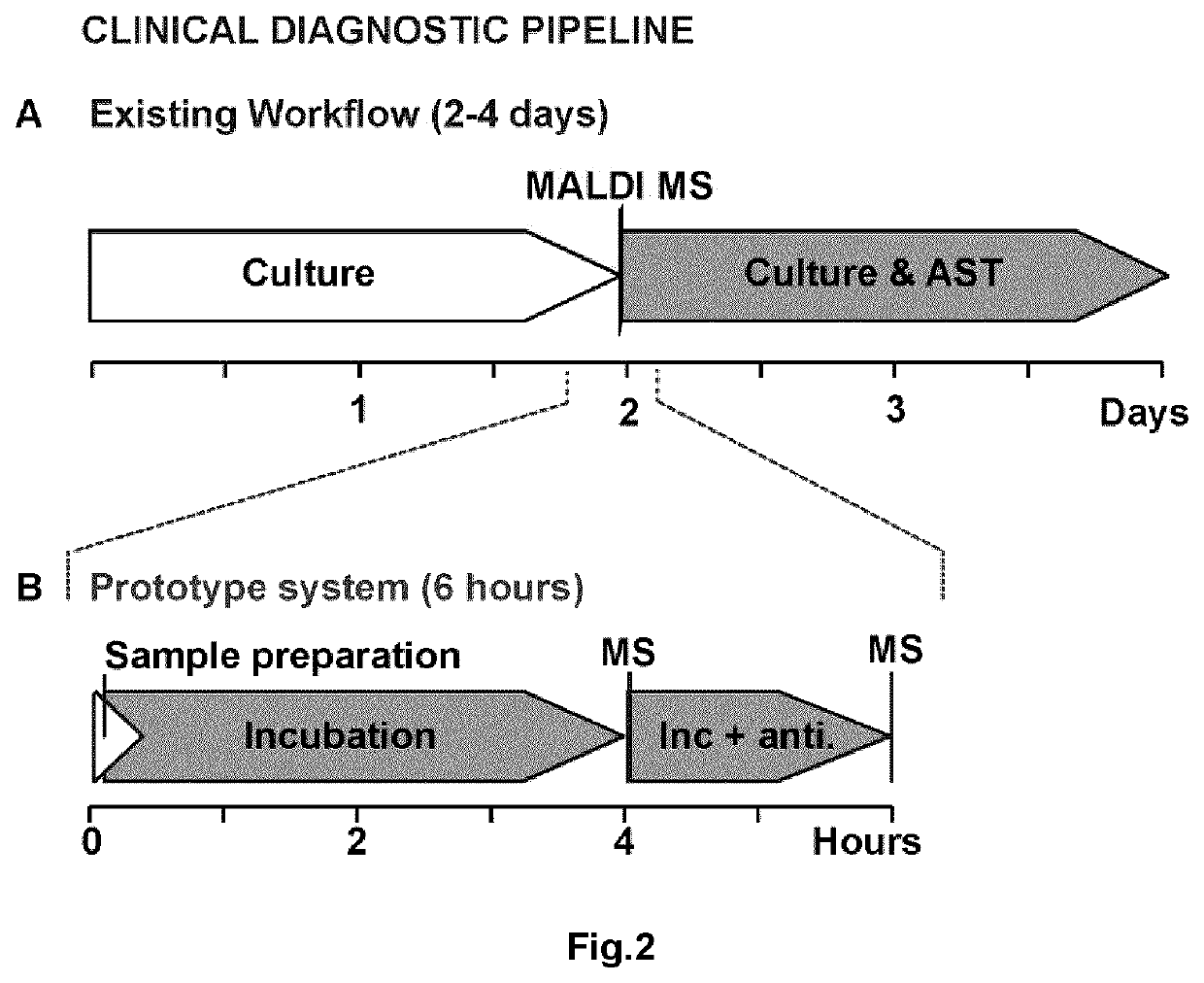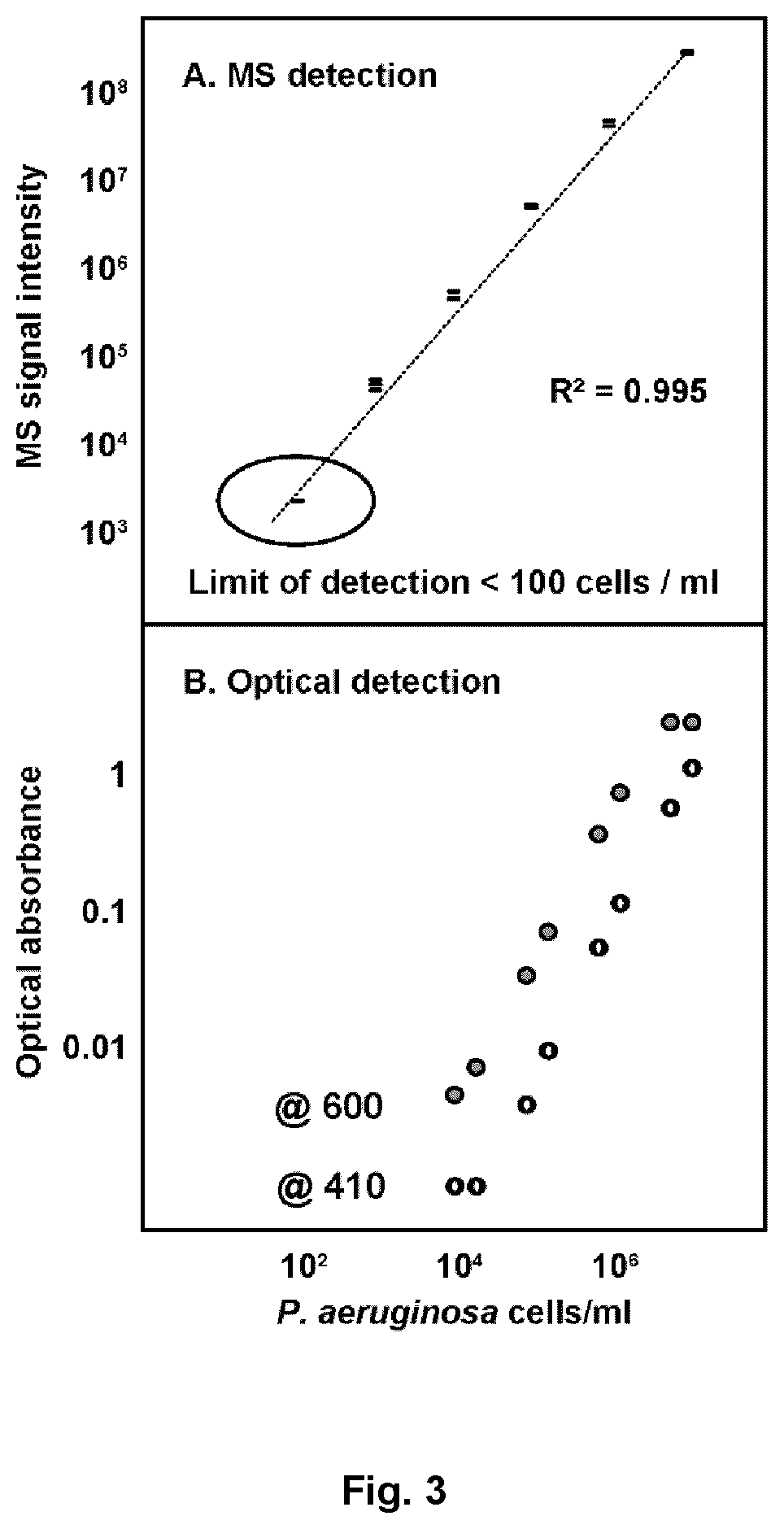Device, Method, And System For Identifying Organisms And Determining Their Sensitivity To Toxic Substances Using The Changes In The Concentrations Of Metabolites Present In Growth Medium
a technology of metabolites and devices, applied in the field of devices, methods and systems, can solve problems such as contributing to morbidity and mortality from infections
- Summary
- Abstract
- Description
- Claims
- Application Information
AI Technical Summary
Benefits of technology
Problems solved by technology
Method used
Image
Examples
example i
[0087]The growth medium used in this example, Mueller-Hinton, enabled metabolite uptake by the microorganisms. This medium is prepared from 2 g beef extract, 17.5 g casein hydrolysate, and 1.5 g starch dissolved in 1 liter of deionized water. A microorganism-containing sample was mixed with the growth medium, the consumed and the produced biomarkers were evaluated using a diagnostic data collection tool. Microbial samples were prepared by making 0.5 McFarland standard dilutions (approximately 1×108) of seven opportunistic pathogens: Escherichia coli, EC; Klebsiella pneumoniae, KP; Pseudomonas aeruginosa, PA; Staphylococcus aureus, SA; Enterococcus faecium, EF; Streptococcus pneumoniae, SP; and Candida parapsilosis, CA. These seven target microbes were selected because they cause more than 85% of the human bloodstream infections. At time 0 hours, standardized microbial samples were combined 1:1 with a Mueller-Hinton growth medium. Aliquots of each sample (100 micro...
example ii
Detection of Clinical Isolates
[0088]To determine the diagnostic feasibility of the present invention, 100 microbial cultures of clinical isolates were prepared and analyzed as per the procedure in Example 1. The 100 isolates were prepared from nine groups of organisms (FIG. 6) representing common pathogens and commensal organisms observed in clinical diagnostic laboratories. Data from 250 known metabolites and all unknown signals were acquired. The 60 most statistically significant signals observed after 4 hours of incubation were determined by one-way analysis of variance (“ANOVA”). Hierarchical clustering of these selected biomarkers showed distinct species-related clustering in metabolite levels (FIG. 7). All 60 of these diagnostic signals were used to create a support vector machine (SVM) model of microbial species. A total of 21 samples were used to construct the SVM computer system and the microorganisms present in the remaining 79 clinical samples were predicted using the met...
example iii
Sensitivity Limits
[0090]To ensure compatibility of the present invention with the clinical implementation, the analytical sensitivity of the device was measured. Cultures of Pseudomonas aeruginosa were grown to approximately 0.5 McFarland. The culture was then diluted using consecutive 1:10 dilutions in metabolite-free phosphate-buffered saline over a 5 orders of magnitude. The limit of detection for metabolite-based analyses was then determined by LC-MS as per the procedure in Example 1 and compared to traditional optical analysis of light scattering by bacterial cells at 600 nM. The LC-MS based assay showed a wider dynamic range and a lower limit of detection (<100 cells / ml) as compared to the optical method. This example indicates that the device and LC-MS analysis has sufficient sensitivity for clinical application of the device.
PUM
| Property | Measurement | Unit |
|---|---|---|
| time | aaaaa | aaaaa |
| volume | aaaaa | aaaaa |
| chemical analysis | aaaaa | aaaaa |
Abstract
Description
Claims
Application Information
 Login to View More
Login to View More - R&D
- Intellectual Property
- Life Sciences
- Materials
- Tech Scout
- Unparalleled Data Quality
- Higher Quality Content
- 60% Fewer Hallucinations
Browse by: Latest US Patents, China's latest patents, Technical Efficacy Thesaurus, Application Domain, Technology Topic, Popular Technical Reports.
© 2025 PatSnap. All rights reserved.Legal|Privacy policy|Modern Slavery Act Transparency Statement|Sitemap|About US| Contact US: help@patsnap.com



